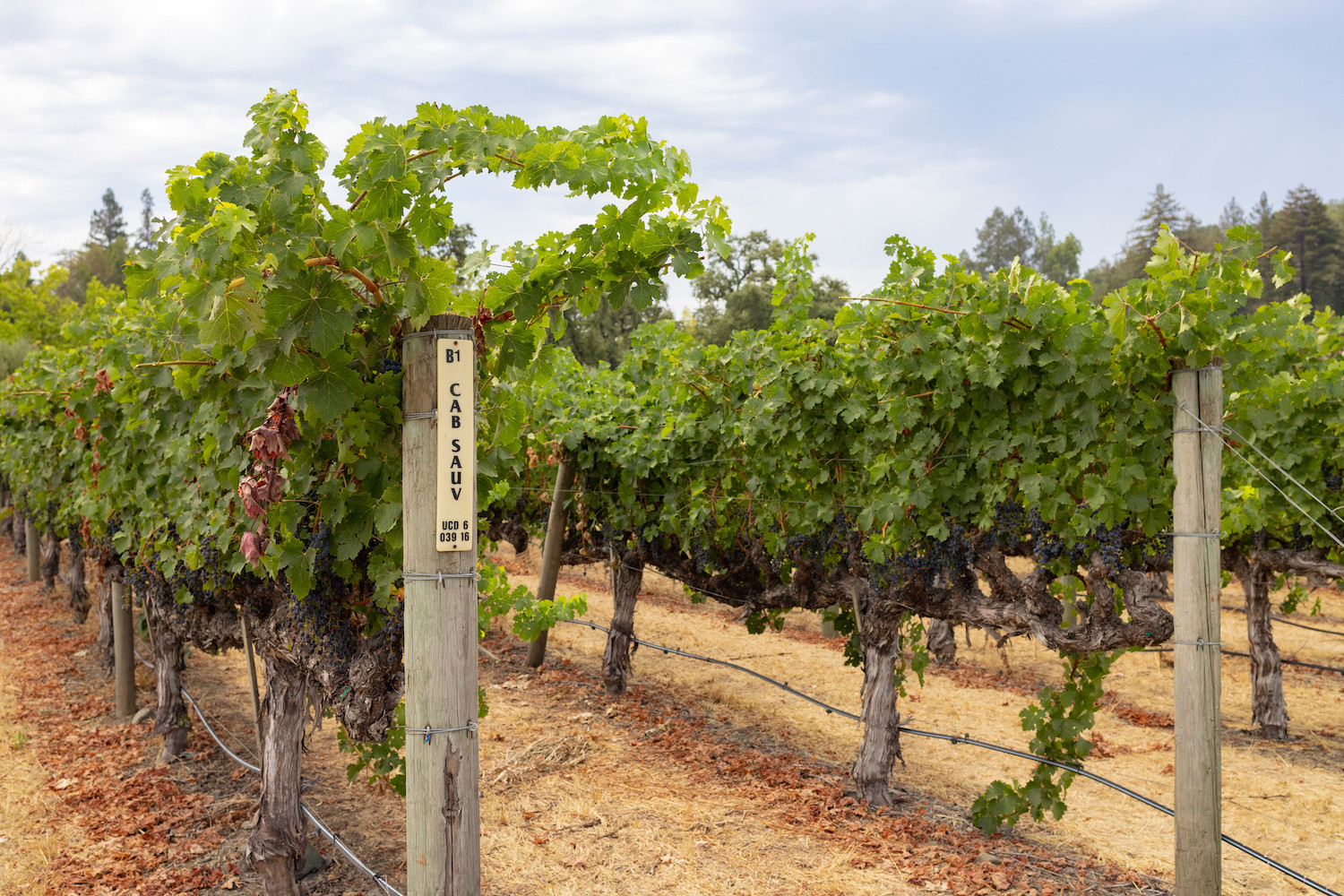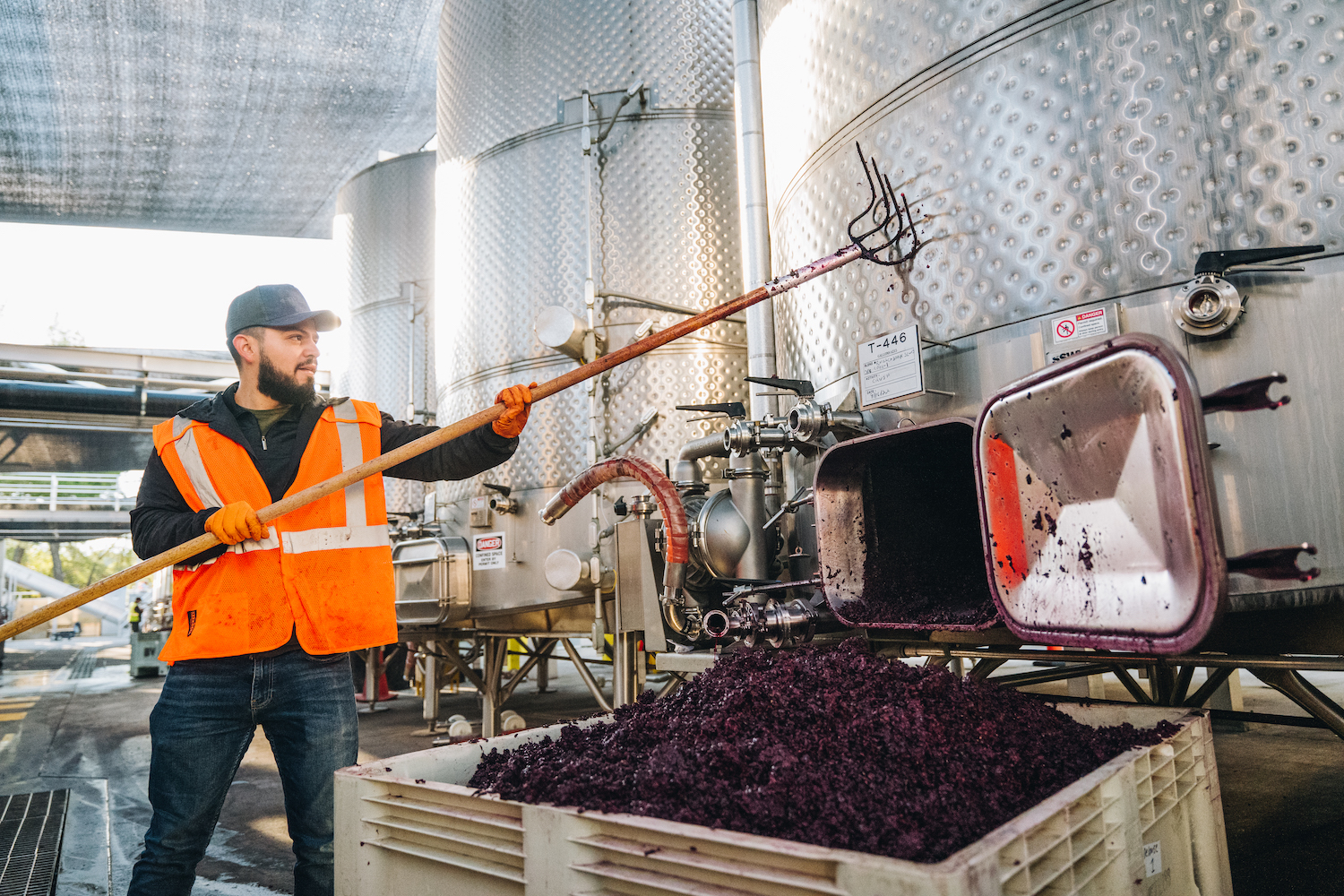
Grace Benoist Ranch in California's Napa Valley wine country, home to the vineyards of Treasury Wine Estates brand Etude.
The wine industry is no stranger to climate change. Vineyards have been facing the brunt of it for decades. It hasn’t been all bad either, as warming has opened up new growing regions. But vignerons, or grape growers, in traditional areas have also been forced to innovate and adapt ahead of other agricultural producers.
Fortunately, many in the industry appear to be embracing sustainability and innovation to keep the vino flowing. TriplePundit spoke with Will Drayton, director of technical viticulture, sustainability and research at Treasury Americas, a division of Treasury Wine Estates, about the challenges facing the industry and what the company’s brands are doing to meet them.
“We notice climate change within a planting cycle”
“The wine industry is in a really good spot to pay attention to climate change," Drayton said. "We’re really well attuned to all of those changes because of how they can affect every aspect of winemaking. It’s an inherent advantage of wineries in general that we’re really dialed into what’s happening, As we grow our fruit, we tend to gather a lot of information, so we have a ton of data. We notice climate change within a planting cycle.”
Because wine takes years to produce, the industry has to plan and adapt accordingly. “We have to make sure to look at the long term,” he explained. That could mean planting new and different varieties to withstand the likelihood of heatwaves, wildfires, and other weather events that lower yields and drastically alter the quality of the fruit.
“In California, if you look at rainfall that’s coming, it’s not predicted to change overall. Generally, things are flat as far as the amount, but the pattern of when it rains is changing,” Drayton said, referring to the extreme weather effects as climate whiplash. “As a result, we have to change how we plant, how we store water. We have to change expectations.”

Adaptation is the name of the game
All of these changes beg the question: Can regions known for particular styles of wine continue to grow the same fruit, or will different varieties have to be considered? Both scenarios are playing out.
“First, how much can we adapt in place? Can we continue to grow the same varieties?," Drayton asked rhetorically as an example. Adapting in place could mean introducing irrigation — something that has previously not been necessary for a lot of viticulture — as well as raising vines higher off the ground and using more canopy to protect the grapes from heatwaves. Still, “less heat-resistant varieties are not doing as well as they used to,” Drayton explained.
That means new varieties are moving into old regions. For California's Napa Valley wine region — where Treasury Wine Estates is a major producer — the result is that cabernet is being planted in cooler areas in the south, while Bordeaux is becoming more successful in its warmer areas. It can be trickier in other regions, however. Growers are limited as to what varieties they are allowed to utilize in places like the Bordeaux region of France, for example, where appellation authorities control what types of grapes can be planted and used for wine.
“There are a huge number of varieties that we don’t take advantage of,” Drayton told 3p. He mentioned varieties from southern European countries like Spain and Portugal as having the potential to produce well in Napa as it warms.
Meanwhile, wine drinkers aren’t enjoying the same styles they were even 100 years ago as the industry and what it offers is constantly changing. Drayton is confident they will embrace further changes. “I’ve got a lot of faith that the consumer will adapt and the industry will adapt,” he said.

Putting climate change mitigation and sustainability to work
That doesn’t mean traditional viticultural areas are giving up on the grapes they’re known for. For example, Treasury Wine Estates has been working alongside the U.S. Department of Agriculture (USDA) in the Rutherford region of the Napa Valley to test whether biocharged soils could help in protecting against climate change. The process “locks carbon into the soil and improves soil structure,” Drayton said. “We combined that with compost for a healthy microbiome. We planted rows with it and without. In a heatwave, there was less loss with the biocharged rows.”
Heatwaves can also increase wine’s brix — or dissolved sugar — leading to problems with fermentation, higher than desired alcohol content, and the potential for unsavory sweetness from residual sugars, among other issues. But biocharging the soil reduced this problem, essentially buffering against a brix increase.
“It’s climate mitigation through carbon sequestration,” Drayton said of the process. And it’s just a small piece of Treasury Wine Estates’ sustainability program. “We’ve got some big goals,” he told us. Those goals include sourcing 100 percent renewable electricity by 2024 — for everything from refrigeration down to tasting rooms — and producing net zero carbon emissions by 2030.
The company is planning to achieve this by increasing solar usage, electrifying its fleets and tractors, purchasing renewable energy credits, buying offsets, and insetting — which, in the wine sector, involves using vineyards and land as carbon sinks. Energy usage has also been reduced through regenerative farming methods, such as using sheep and goats instead of tractors to mow down hillsides.
“We’ve got goals around packaging reuse and recyclability,” he added, as well as water stewardship and river restoration. The winemaker also recently worked with the U.S. Environmental Protection Agency and landholders in the valley to return the Napa River to its natural state. “We had to give up some land and cut back vines to do so, but it was worth it.”
Treasury Wine Estates and other like-minded winemakers see the value in being part of the solution — even if it costs a bit more and requires a little sacrifice, such as with the Napa River restoration. For those in viticulture, mitigating climate change is not only a best practice, but an imperative for the industry to continue to thrive.
Images courtesy of Treasury Wine Estates

Riya Anne Polcastro is an author, photographer and adventurer based out of Baja California Sur, México. She enjoys writing just about anything, from gritty fiction to business and environmental issues. She is especially interested in how sustainability can be harnessed to encourage economic and environmental equity between the Global South and North. One day she hopes to travel the world with nothing but a backpack and her trusty laptop.














